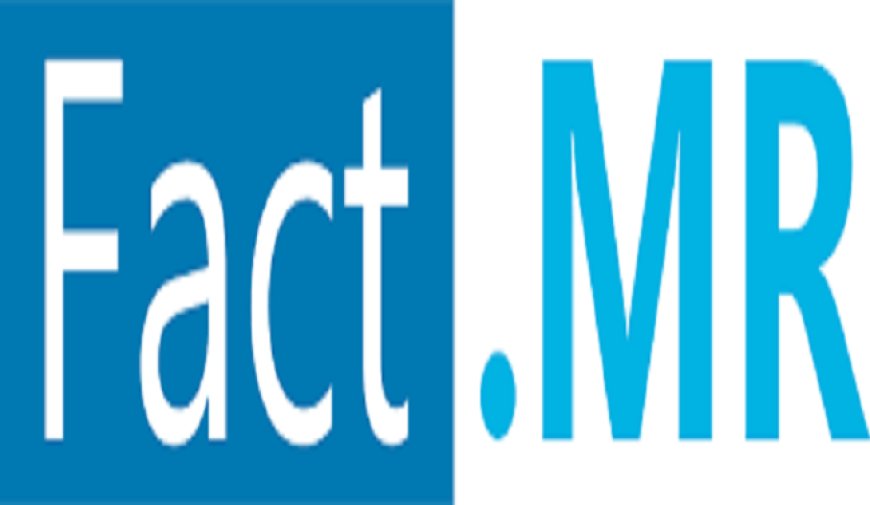Data Center Expansion Fuels Demand for Lead Acid Batteries in Europe
The global lead acid battery market was valued at US$ 57.1 billion in 2023 and is projected to grow at a CAGR of 5.3%, reaching US$ 96.5 billion by 2033.

The global lead acid battery market was valued at US$ 57.1 billion in 2023 and is projected to grow at a CAGR of 5.3%, reaching US$ 96.5 billion by 2033.
The lead acid battery market continues to hold a significant position in the global energy storage industry, driven by its reliability, cost-effectiveness, and extensive applications across various sectors. Lead acid batteries are widely used in automotive, industrial, telecommunications, and backup power systems due to their ability to provide stable energy output and withstand deep discharge cycles. The growing demand for uninterruptible power supply (UPS) systems in commercial and residential applications has further strengthened the market. Additionally, advancements in battery recycling technology and sustainability initiatives have ensured that lead acid batteries remain a viable choice in energy storage solutions.
Want Full Report? Enquire Here-https://www.factmr.com/report/4555/lead-acid-battery-market
Market Insights
One of the key factors influencing the lead acid battery market is its widespread use in the automotive sector, particularly in conventional internal combustion engine (ICE) vehicles and hybrid electric vehicles (HEVs). Despite the rise of lithium-ion batteries, lead acid batteries continue to be the preferred choice for vehicle starting, lighting, and ignition (SLI) applications due to their affordability and ability to handle high power demands. The industrial sector also relies heavily on these batteries for material handling equipment, forklifts, and renewable energy storage. Additionally, the telecommunications industry depends on lead acid batteries for backup power, ensuring uninterrupted network operations. The increasing investments in smart grid infrastructure and the expansion of renewable energy sources further boost the market’s stability.
Market Outlook
The future of the lead acid battery market is expected to remain stable, with moderate growth driven by advancements in battery technology and increasing demand from emerging economies. While lithium-ion batteries continue to gain market share, lead acid batteries maintain their dominance in applications where cost and reliability are the primary concerns. The development of enhanced flooded batteries (EFB) and absorbent glass mat (AGM) batteries has improved efficiency, safety, and lifespan, making them more competitive. Furthermore, regulatory policies promoting battery recycling and sustainability will support the continued production and usage of lead acid batteries. The automotive sector, particularly in electric vehicle auxiliary applications, will continue to drive demand, while industrial and energy storage applications will provide additional growth opportunities.
List of Key Companies Profiled in The Report
- Furukawa Electric Co. Ltd.
- Hoppecke Batterien GmbH & Co. KG
- Exide Industries Ltd.
- Yokohama Batteries Sdn. Bhd
- Camel Group Co. Ltd.
- Others
Market Demand
The demand for lead acid batteries remains strong across multiple industries, with the automotive sector being the largest consumer. The rising global vehicle production, including commercial and passenger vehicles, directly influences battery demand. In the industrial sector, lead acid batteries are extensively used in backup power systems, data centers, and emergency lighting solutions. The renewable energy sector is also witnessing an increased demand for lead acid batteries in off-grid and hybrid solar power systems. Additionally, the growing reliance on UPS systems in corporate offices, healthcare facilities, and educational institutions continues to drive market growth. The affordability, reliability, and recyclability of lead acid batteries ensure their sustained demand despite growing competition from alternative battery technologies.
Recent Industry News
The lead acid battery market has been witnessing significant developments in recent months. Leading manufacturers are investing in research and development to enhance battery performance and increase efficiency. Several companies have launched advanced lead acid battery models featuring improved cycle life, higher energy density, and faster charging capabilities. Additionally, major battery manufacturers are expanding their production facilities to meet the rising demand in automotive and industrial sectors. The push for sustainability has also led to increased investments in battery recycling programs, with companies focusing on reducing environmental impact and complying with stringent regulatory standards. Furthermore, partnerships between battery manufacturers and electric vehicle (EV) companies are shaping the future of auxiliary battery applications in hybrid and electric mobility solutions.
Notable Developments
The industry is witnessing notable innovations and strategic advancements that are shaping the lead acid battery market. One of the most significant developments is the growing adoption of advanced battery management systems (BMS) to enhance efficiency and longevity. Companies are also focusing on manufacturing sealed lead acid batteries with spill-proof designs to cater to critical applications in healthcare and telecommunications. The integration of lead acid batteries with renewable energy storage systems is another major trend, allowing for efficient energy management in solar and wind power applications. Additionally, advancements in nanotechnology and electrode materials are improving the overall performance of lead acid batteries.
Competitive Landscape
Key players in the lead acid battery market are investing in R&D and securing patents to strengthen their competitive position.
In June 2022, Mesha Energy Solutions Pvt. Ltd. received a patent from the Indian government for its battery performance technology, applicable to lithium-ion, lead acid, sodium-ion, and other battery types.












